Food for the Soul: Caravaggio 2025 in Rome
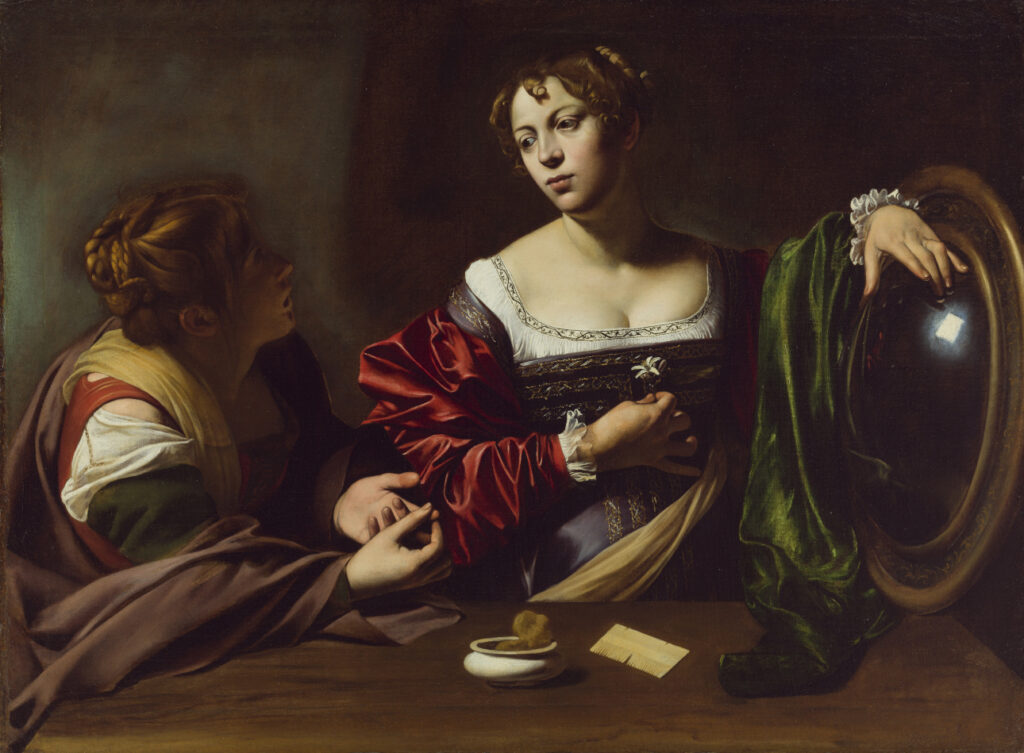
Caravaggio. Martha and Mary Magdalene, 1598-1599. Oil on canvas. Detroit Institute of Arts, USA / Photo © Detroit Institute of Arts/ Bridgeman Images
By Nina Heyn – Your Culture Scout
It was a strange time to be visiting Rome for an exhibition, Caravaggio 2025 at the Palazzo Barberini. The city was thronged with people lining up to view the casket of Pope Francis, who had just passed away. The cardinals had gathered for a conclave. Life and death, faith, and especially Catholic religion were suddenly very much on the minds of visitors to Rome—the city where, four centuries ago, popes brought both fame and condemnation to one of the greatest artists that Rome has witnessed.
Michelangelo Merisi da Caravaggio (1571-1610) spent his life serving Roman patrons and the Vatican popes. His artistic life revolved around commissions for paintings glorifying religious contemplation, humility, mercy, submission, and acceptance of punishment. His private life was punctuated with drunken brawls, fights over a woman or an insult, imprisonment for slander, and, finally, condemnation for murder. Even when he was finally pardoned for this cardinal sin against the commandment of “thou shalt not kill,” Caravaggio never got his final absolution from his papal patron—he died, alone, in the small seaside town of Ercole, trying to board a ship back to Rome. The man who painted so many moving images of gaining and maintaining faith, from his St. Matthew paintings to The Conversion of St. Paul and The Ecstasy of St. Francis, did not resolve his conflicts with the prescriptions of his faith until his untimely passing.
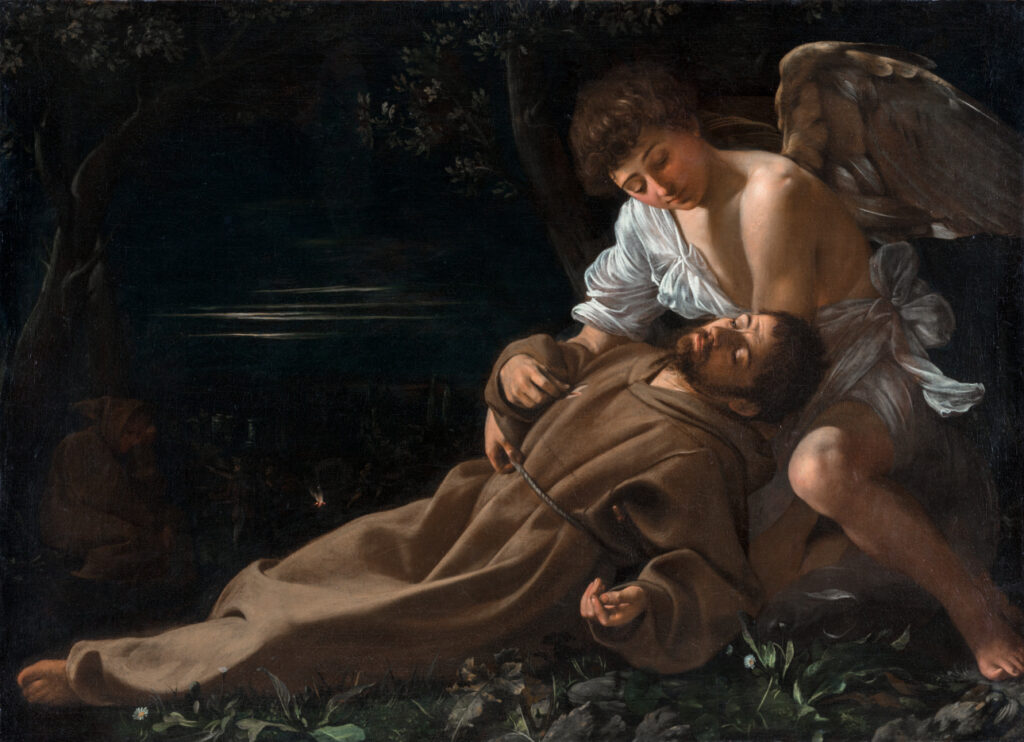
When the young Caravaggio arrived in Rome in 1592 to make his fortune as a painter, he joined the workshops of established artists and started to seek individual commissions from both secular patrons and church officials. Thus, his early output included religious pictures like The Ecstasy of St. Francis as well as elegant decorative pieces for Roman palazzos, like The Cardsharps.
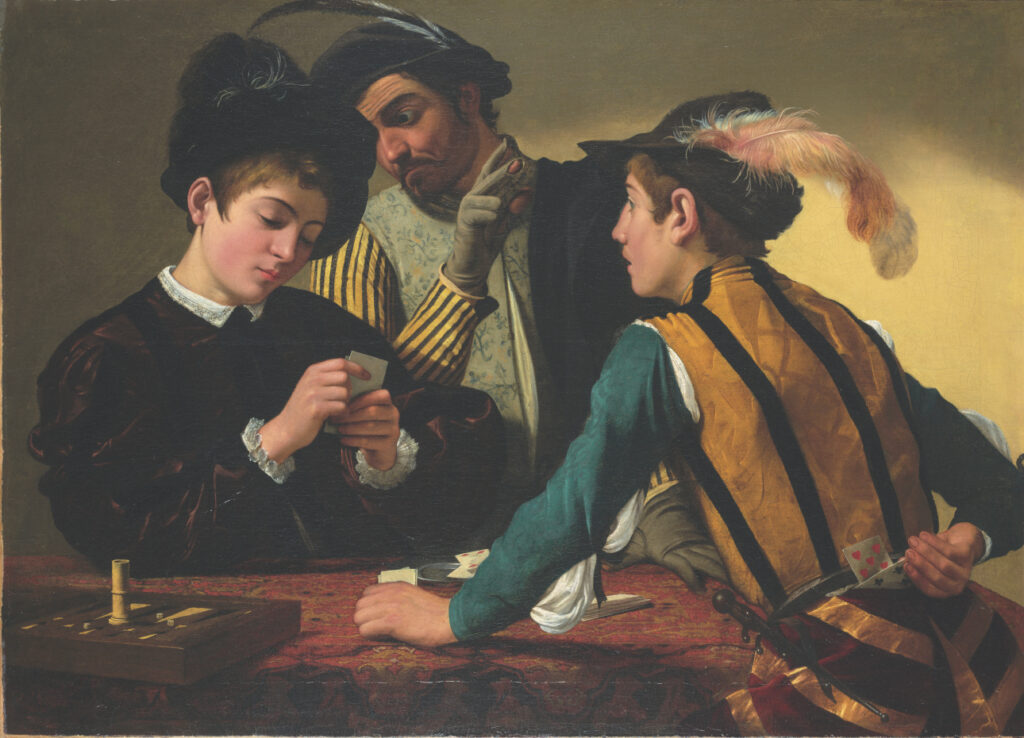
Regardless of his subject—a Greek mythology character like Narcissus or Bacchus or a saint from Christian iconography—the artist would paint individualized faces and poses so distinct and captivating that they would immediately cause other painters to copy his images.
Some of the most dramatic and bold Caravaggio paintings are in churches, and these, of course, could not be present at the Rome exhibition. Other paintings on view could only have been dislodged from their countries of residence by a show as important as this one. In fact, a traveling star of this exhibition is one of the most exciting art discoveries of the late 20th century.
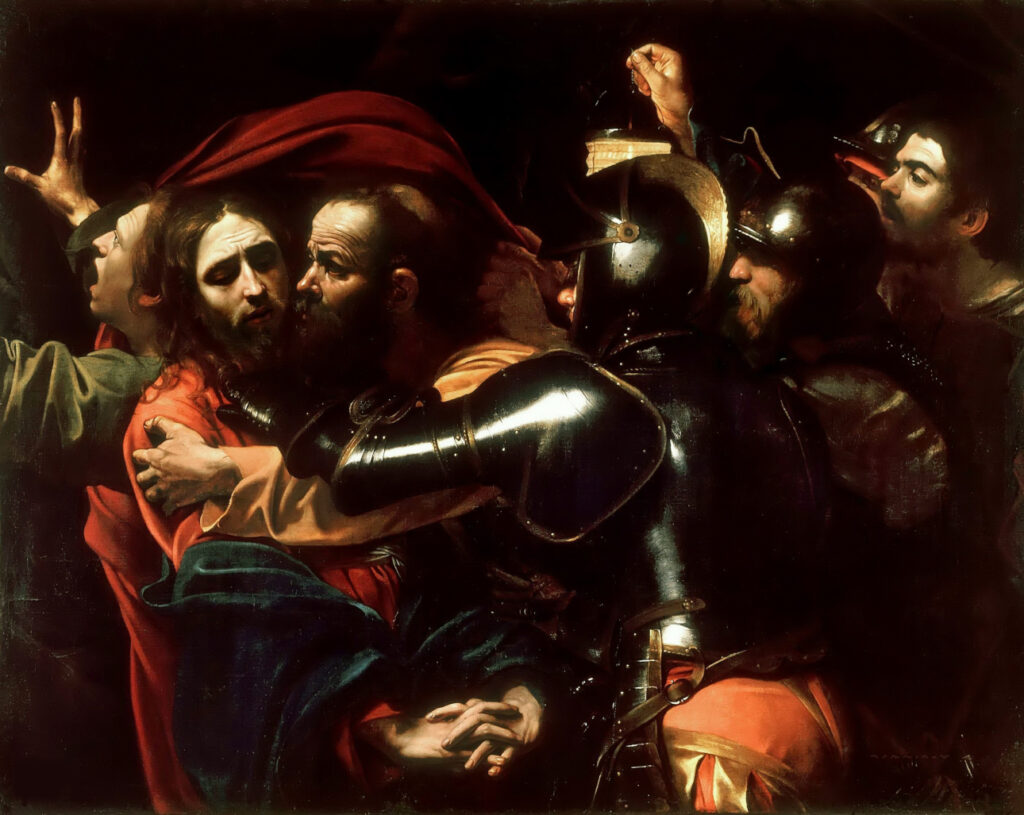
The painting, called The Taking of Christ, combines the most typical elements of the artist’s best works: a complex composition of figures in dramatic action, a theatrical black background contrasted with sharp shards of light, an important religious theme, and a virtuoso rendering of surfaces of the gleaming steel of the armor and swishing fabric. Ironically, this painting spent over 200 years being misattributed to a different painter. As of 1672, the painting was still being described in detail as a work of Caravaggio, remaining in the Mattei family who were the descendants of the original Caravaggio client. However, in 1793, an inventory erroneously ascribed the canvas to a Dutch “Caravaggista” named Gerrit van Honthorst. Under this misattribution, the picture changed hands many times, ending up in Ireland as the property of the Jesuit House of St. Ignatius. In 1990, the Jesuits asked the National Gallery of Ireland for help with restoring the picture. Sergio Benedetti, the gallery’s curator, had his suspicions, so he spent a couple of years authenticating the picture that, for so long, had been thought to be Honthorst’s copy of a lost masterpiece. The current exhibition is co-curated by historian Francesca Cappelletti; though she is now a director of the Galleria Borghese, she was one of the researchers in the 1993 reattribution of the painting back to Caravaggio.
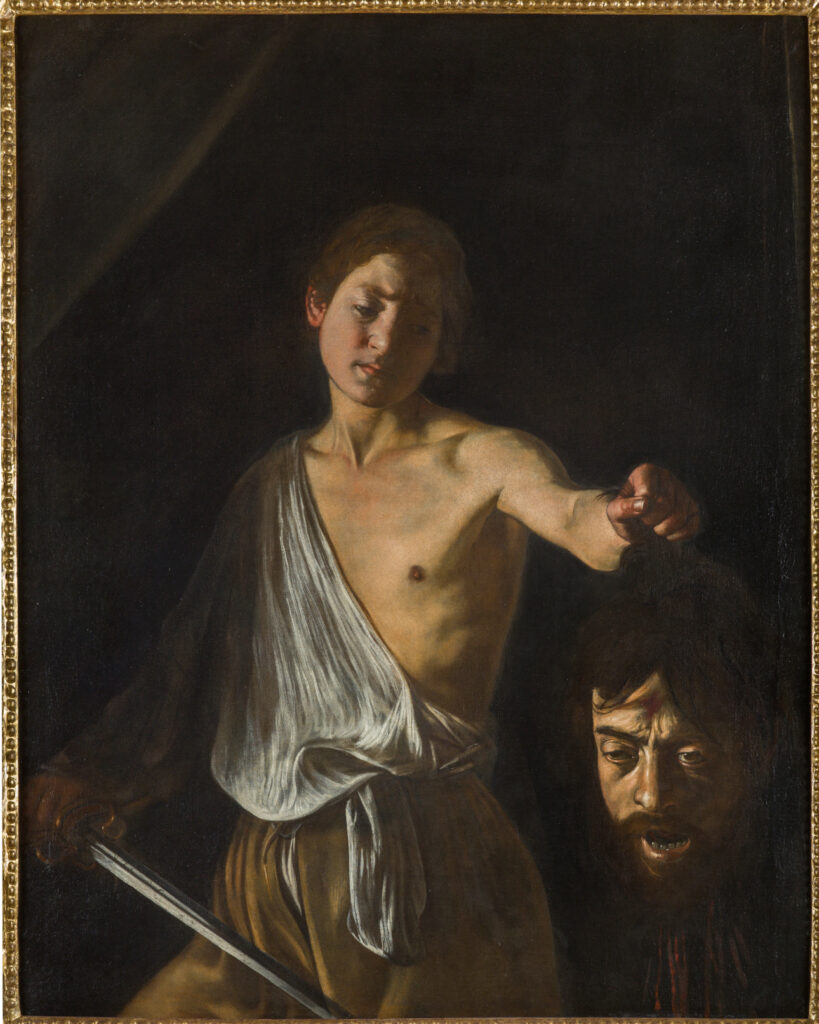
The Taking of Christ represents the most prolific and artistically most accomplished period in the artist’s life. In the early 1600s, he had reached the pinnacle of his career. With commissions that included major altar paintings and patrons’ portraits, he was the most talented and sought-after painter in Rome. However, Caravaggio had a violent nature that had punctuated his life since his youth, with escapes after fights, arrests for insults, and assaults, drunken brawls, and quarrels. Finally, in 1606, at the height of his artistic achievements, he destroyed his rise to fame and social standing by yielding to his violent impulses once again and getting into a sword fight with a “golden youth” named Tomassoni. Caravaggio may have killed him accidentally, but Tomassoni came from an influential family, and the artist’s patrons were unable to shield him from the pope’s wrath and a death sentence in absentia.
One of Caravaggio’s most famous and most interpreted works is a version of David with the Head of Goliath, in which he paints the giant’s face—bloodied and tragic—as his self-portrait. The picture is considered the artist’s confession of the sinful act and a plea for the Church’s forgiveness; more specifically, it is thought to have been intended for Pope Paul V, to whom Caravaggio was addressing a plea for clemency. He painted this during his stay in Naples, where he was hiding from the death sentence and where he created some of his most dramatic and yet contemplative pictures.
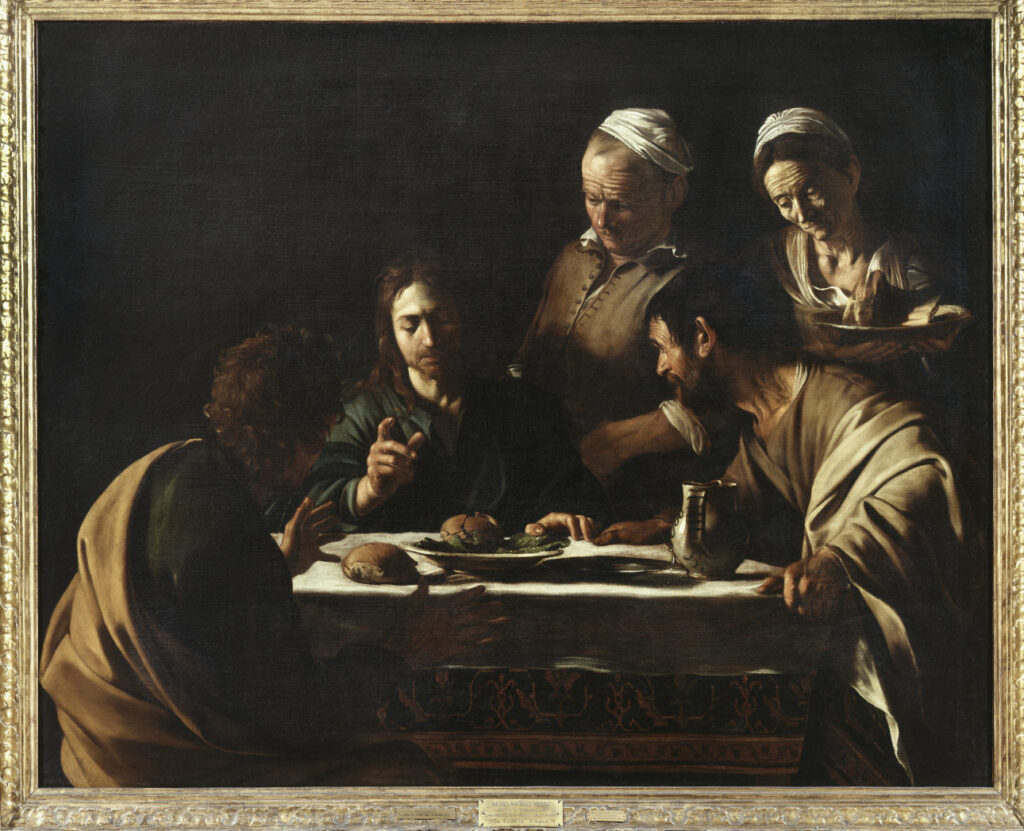
These are but a few examples of the two dozen pictures gathered for the Barberini’s show, and they are only highlights of Caravaggio’s larger oeuvre of about 60 known works. Some of his greatest compositions are in churches, and many are dispersed in various collections.
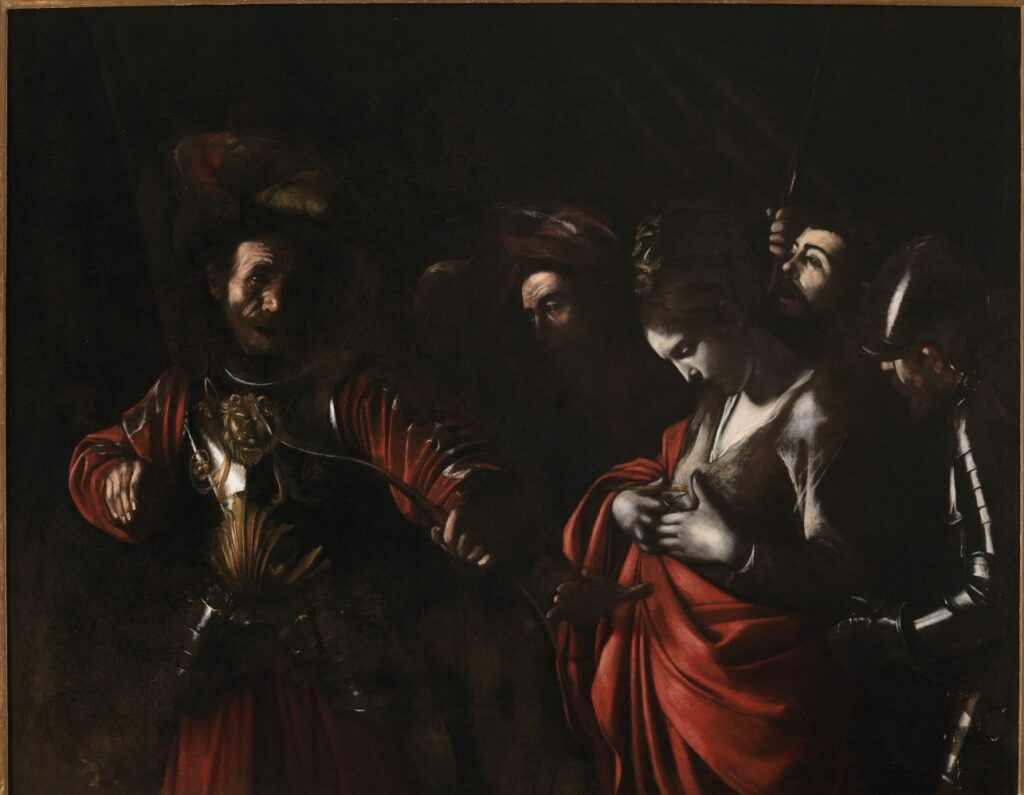
In 1610, Caravaggio was in Naples again, after several years of wandering in the southern parts of the Mediterranean coast from Malta to Sicily. His propensity for violent altercations had not abated much; in Malta, he got into a fight with an aristocratic knight, and in Naples, he was severely beaten and disfigured. One of his last works was The Martyrdom of St. Ursula, painted for Prince Marc Antonio Doria from Genoa. The picture is done in a style that Caravaggio developed in later life during his peregrinations. Gone are the realistic precision, sharp contrasts, and vivid orange and green hues of his early works. He would paint this picture with slashes of his brush while losing nothing of the emotional impact of his earlier works. As with Goliath, this is an image of sadness and a contemplation of death. Ursula has just been stabbed by the leader of the Huns—he seems remorseful and she is…startled. Even as she protectively clutches her wound, her flesh is already turning ashen. This is a moment of surprise that life can escape so fast and so easily. Considering that this was the same year in which Caravaggio himself would perish, just on the verge of his return to Rome after his pardon had been issued, this seems a curiously prescient vision. Like Ursula, the artist would lose his life suddenly, in a cruel twist of fate.
Caravaggio 2025, an exhibition of 24 important works spanning the lifetime of the artist, is on display at Palazzo Barberini National Gallery in Rome from March 7 to July 6, 2025.
